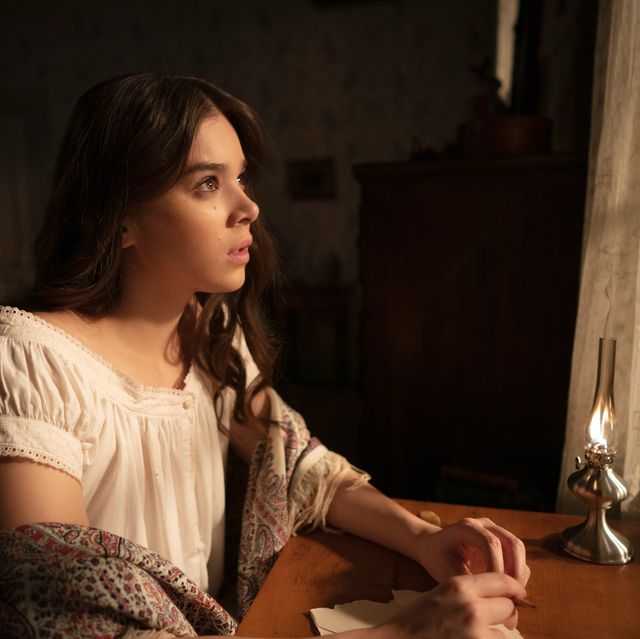“I’m Nobody! Who are you?
Are you – Nobody – Too?
Then there’s a pair of us!
Don’t tell! They’d banish us – you know!”
Emily Dickinson
This article is part of a series where we look back in history at strong women – from real life, fiction, or the blending of both into legend – who blazed new trails, had great adventures, and stood up for what was right. They are the originals that our grandmothers and generations of women before admired and who became the stepping stones for us, the Geek Gals of today. We shall call these female forbearers our Classic Geek Gals.
I’d like to introduce to you our next Classic Geek Gal: Emily Dickinson.
Who was Emily Dickinson?

Emily Dickinson is an American poet who lived in the 1800’s. While she was not famous during her lifetime, she came to be known as an incredibly influential and important poet in American history. Born in 1830 in Amherst, Massachusetts, Emily’s family was involved in law, politics, and the local community. She was close to her brother and sister and wrote frequently to school friends and family members. Even though she later became a bit of a recluse, this lifelong habit of correspondence to loved ones helped to encourage her and develop her passion for writing.
She was bright and loved education, being fascinated by both language and science.
Her father, a lawyer, believed that all his children – girls included – should be well-educated. He sent both Emily and her younger sister Lavinia to Amherst Academy for much of their education. Emily was known to be a bright and dedicated student, excelling in writing, Latin, and the sciences. In fact, one of her favorite classes, botany, impressed her so much that identifying plants and gardening became a love that lasted throughout her life. She was also fascinated by the debate of how much religion and science impacted each other, as seen in one of her poems:
I pull a flower from the woods –
A monster with a glass
Computes the stames in a breath –
And has her in a ‘class’!
Emily Dickinson
She read broadly: poetry, novels, and plays.
From the poetry of Ralph Waldo Emerson, William Wordsworth, and Elizabeth Barrett Browning to Henry Wadsworth Longfellow’s Kavanagh and Charlotte Bronte’s Jane Eyre, Emily devoured any literature that she could acquire. In some cases, she had her brother smuggle into the house to avoid her father’s stern eye. The Dickinson household also provided such staples as the Bible, Aesop’s fables, and works by William Shakespeare. In fact, Emily loved Shakespeare’s writing so much, she wrote to one friend “Why is any other book needed?”
Emily Dickinson challenged the time’s expectations.

While growing up surrounded by church and religious fervor, Emily was not as convinced as the family and friends around her, who became members of their local churches. The church definitely influenced her. She quoted the bible, and at times, followed hymnal structure in her poetry. However, Emily felt that, instead of devoting herself to a God that she could not see, she should instead devote herself to her poetry, a fairly radical idea at the time.
She challenged the time’s literary rules, too.

Emily only published ten poems and a letter during her lifetime, despite having written over a thousand in total. She was not known for her poetry outside of her circle of family and friends, with whom she shared quite a bit through her correspondence. It was only after her death and the discovery of her poems by her younger sister Lavinia that we can see the true extent of Emily’s genius. She followed a hymn or ballad-like structure, writing in first person with short stanzas, using the rhythm of the phrases to emphasize certain words or ideas, and sometimes even breaking a line to convey a particular emotion. Her writing also is peppered with dashes, which she felt better communicated the sense of the poem. And she argued that the meaning was changed when editors’ removed her stylistic punctuation.
Emily Dickinson’s life shows us how the pursuit of one’s passion can bring greater depths to our existence and how challenging stereotypes may even grow those passions. She knew that her words would continue to live long after she was gone, hopefully inspiring our own passions and minds. In Emily’s own words:
“A word is dead
When it is said,
Some say.
I say it just
Begins to live
That day.”
Emily Dickinson
May you also speak your word and begin to live this day!
References
- Wikipedia’s Emily Dickinson
- Poetry Foundation’s Emily Dickinson
- Poets.org’s Emily Dickinson
- Britannica’s Emily Dickinson
Read more of Courtney’s articles.


2 thoughts on “Classic Geek Gal: Emily Dickinson”